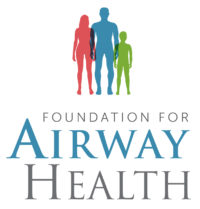I recently joined my associate, Jessica for a myofunctional therapy conversation to help parents understand what matters when it comes to your child and his or her optimum facial development and health. In our myofunctional therapy conversation we unpacked six important topics.
You can watch the video or read on for a quick recap! (But the video is 🔥).
There is also a free workbook you can download to take notes if that would be helpful! You can get that here.
Here is a list of topics that were discussed in the “Myofunctional Therapy Conversation”
- Airway awareness
- Tongue-ties
- Correct oral rest posture
- Chewing
- Nasal breathing
- Early orthodontic intervention
Why does the airway matter?
Straight teeth are nice and all but the correct development of the airway means that a person gets adequate oxygen and isn’t deprived. This is news to many parents. When orofacial myofunctional disorders are present the facial structure can be altered. When the maxilla (the upper jaw) does not grow large enough forward and out, the rest of the face may suffer. Similar to a lid on a box, the mandible (lower jaw) will follow the shape of the maxilla. When the mandible grows sufficiently forward, it brings with it the tongue, soft tissues, and airway. So when the maxilla fails to grow adequately, the airway may be compromised.
The reason it’s “all about the airway” is that sufficient oxygenation is necessary for optimal health and development. Sleep concerns, bedwetting, behavioral problems, anxiety, depression, and digestive issues are just a few results of poor breathing.
Why do tongue-ties matter?
Tongue-ties limit tongue mobility. The movement of the tongue is important for speaking, chewing, drinking, breathing, swallowing and more. It is also extremely important for adequate craniofacial development. Identification of a tongue-tie in a child is beneficial so that parents can plan a release before the head and face are completely developed.
What is the correct oral rest posture?
Correct Tongue Posture
A low resting tongue posture can contribute to incorrect muscle function. This may be the result of a habit or a physical barrier, such as a tongue-tie. It definitely has a domino-like effect. When the tongue resting posture is low, it can lead to airway obstruction. When someone has difficulty getting air, the body responds to this “911” emergency call by opening the mouth and shifting the tongue forward to open up the airway and allow more air in. Quite often, this temporary mouth breathing situation leads to a chronic habit of open-mouth breathing.
Incorrect tongue resting posture is most concerning because of the constant, static force of the tongue at rest. This constant pressure is more of a concern than the intermittent forces of an incorrect swallowing pattern (tongue thrust detailed below).
When it comes to children, correct oral rest posture and continuous nasal breathing is absolutely critical for sufficient craniofacial and airway development.
Correct Mouth Posture
Correct mouth posture is considered to be mouth closed, teeth gently together, and lips sealed. Incorrect mouth posture can lead to changes in how the face looks.
Why is chewing important for a child?
Chewing puts an expansive force on the face resulting in more optimum craniofacial development. In today’s world many children are drinking their food and chewing less. Plus, the standard American diet includes too many soft, easy to chew, refined foods. I can assure you that it takes a whole lot less muscle to chomp up a processed chicken nugget instead of a piece of steak or chicken. Same about hot dogs.
For the face to develop optimally a child needs to be using the muscles as well as breathing through the nose.
Why is nasal breathing important for a child?
Mouth breathing has developmental consequences to the face. When someone is mouth breathing, the tongue is low and the mouth is open. This means that the oral rest posture is incorrect. A person simply can’t have the tongue resting on the palate, and the lips sealed when mouth breathing is occurring. This incorrect oral rest posture alters the craniofacial development and causes changes to the growth of the upper and lower jaw (maxilla and mandible), palate, and airway.
With the mouth gaping open, a long, narrow facial structure results as the facial growth is pulled down instead of growing forward as it should.
Also, lack of nasal breathing doesn’t put an expansive force on the growth of the face, resulting in insufficient growth of the bone. This is where malocclusion or crowding comes into play. The teeth can’t erupt correctly if there isn’t adequate space.
Why is early orthodontic intervention important for a child?
To identify misguided craniofacial growth and to determine what early orthodontic treatment is needed.
Some children need arch development (more space) before braces will even be considered. An orthodontic evaluation allows you to work in offensive mode instead of defensive mode!
How to get started if you have concerns
If you would like to start a myofunctional therapy conversation with us, the first step will be to have your child completely assessed. (You can book that here.) This will include the assessment of breathing, sleeping, chewing, swallowing, speaking, and posture. We will be the “hub of the wellness wheel.” Once your child has had an assessment, a comprehensive plan can be created.


Meet Carmen Woodland
I found this path of passion years ago as a dental hygienist. After a stint in graduate school to earn my M.B.A., I decided that I needed to pivot. My heart was no longer in scraping teeth, but making a much bigger impact on lives touched by myofunctional impairment.
My story is personal and close to home. My sweet granddaughter was passed back and forth amongst doctors and therapists for years trying to figure out her speech, breathing, sleep, chewing and swallowing issues. It wasn’t until I completed more training that I knew her problem was a significant tongue-tie. Bingo.
Fast forward to now. I’m a crusader. A warrior. A voice for those who can’t find theirs, or who don’t have one.
I left clinical hygiene practice to start Integrative Myofunctional Therapy. It has evolved from a way to make a living, into an obsession!
I see clients all over the world and provide innovative, virtual therapy in the remotest of places.
In addition, I also
- Teach other dental hygienists, speech therapists & dentists how to become myofunctional therapists through the Myofunctional Therapy Training Acadedmy.
- Coach dental offices on how to implement myofunctional screening into the daily practice
- Speak in various settings
I’m an airway provider for the Foundation of Airway Health, where I work diligently for the recognition, diagnosis, and treatment of airway-related disorders.
And last but not least, I’m a proud member of several professional associations that afford me the opportunity to learn so that I can help you. My professional memberships include:


